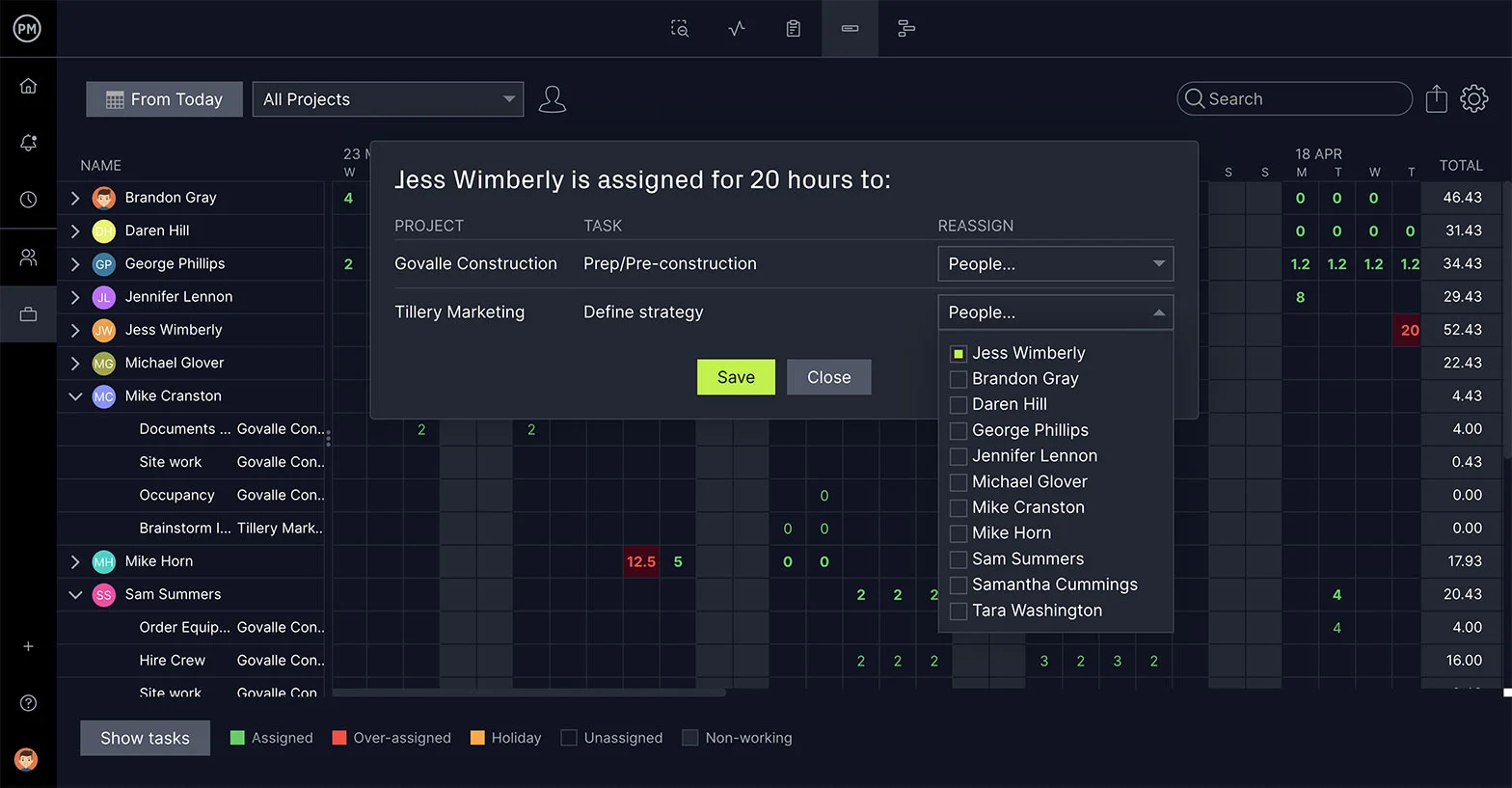Whether you call it project financial management or project accounting, managing a project’s finances is essential to delivering a successful project. It’s more than just keeping up with costs. There’s a lot of planning, managing and tracking involved.
But what exactly is financial project management? We’ll get to that and define the various project financials before getting into the process of managing a project’s finances. Then, to help you get started, we’ll have a few free financial management templates you can download.
What Is Project Financial Management?
Project financial management is the process of controlling the financial aspect of a project, such as its cost, revenue and profit. To do this requires planning, estimating, budgeting, funding, managing project expenses and billing. This process is usually overseen by the project management office (PMO) of an organization.
The budgeting part of project financial management is by far the most important aspect of this process. Being able to effectively manage the budget over the life cycle of the project and making sure that all the planned tasks are completed without having to overspend is critical to the successful delivery of the project. The importance of project financial management cannot be underestimated. It’s a process that starts with selecting profitable projects for an organization to the moment they’re completed successfully to drive business growth.
Other benefits include helping track progress with financial metrics, identifying and prioritizing projects that have a higher return on investment and managing project scope and cost overruns. It can also be helpful with improving resource management capabilities by better allocating resources based on your business’s strategic goals.
Naturally, project management software facilitates these benefits. ProjectManager is award-winning project management software that can track costs in real time to help you with project financial management. Our real-time dashboards give project managers a high-level overview of project costs whenever they want them. Dashboards have easy-to-read graphs and charts that track five other project metrics, too. Plus, there’s no time-consuming setup required as with lightweight alternatives. Get started with ProjectManager today for free.
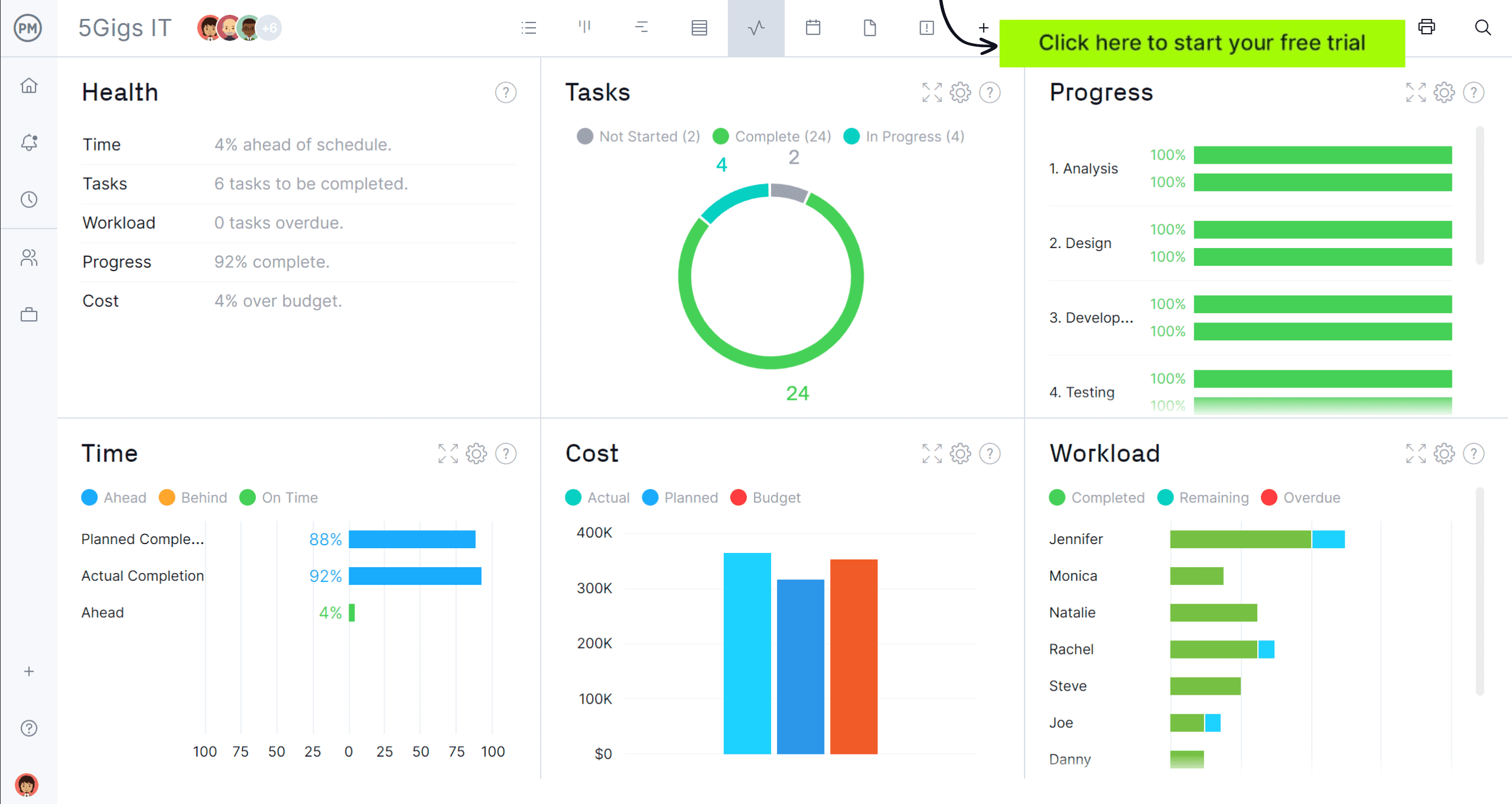
What Are Project Financials?
Project financials are the money related to the project, program or portfolio you’re managing. By planning, managing and tracking project finances, project managers can help deliver a profitable project. Project financials center around controlling the following.
Project Costs
Project costs refer to the total funds that a project requires. This includes direct costs, such as fixed labor, materials and equipment, as well as indirect costs that include utilities and quality control, among other things.

Project Revenue
Project revenue is the total amount of money a project earns before subtracting its costs. However, it’s not necessary to wait until a project is executed to know its potential revenue, as it can be estimated by looking at historical data, such as past performance or using formulas. Estimating project revenue is critical for selecting the most profitable projects during the project intake process.
It can be represented by target revenue, which is what the project is expected to earn and actual billing, what you bill your customer. It can also include the estimate at the completion of project billing, which is actual billing and the remaining labor billing which is planned billable expenses plus flat fees for all unfinished activities. All these project revenue metrics greatly help prioritize projects.
Project Profit
Project profit is the total amount of money that the project earns after expenses. Net profit for a project is the gross profit minus operating expenses and taxes.
Project Funding Sources
Project funding sources can come from many different sources. For example, debt is when those funds are raised from lenders. Companies can also issue bonds and sell them for funding. Equity financing is when a developer raises private equity funds. They can also get loans to finance the project, which is a common tactic for project-based organizations that execute multiple projects simultaneously.
Project Cash Flows
Project cash flows refer to cash moving in and out of an organization and determine the project’s rate of return or value. This money can be used to fund the project.
How to Manage Project Financials
Whether you’re working on a large, expensive project or a smaller one, managing project finances is essential to delivering that project on time and within budget. Following these 11 steps will help you better manage your project financials.
1. Clearly Define the Scope of Your Project
Before you can zero in on the costs, you need to understand the scope of the project. That includes the project goals, deliverables, tasks, and, of course, costs. Create a scope statement to ensure that you cover all the bases, such as the project schedule, and align the project with stakeholder’s expectations.
2. Identify Project Risks
All projects are risky endeavors. Unexpected events can have a positive or negative impact on the project. Therefore, one must plan for risks by identifying what might happen and then create a plan of action if it does. It also helps to prioritize their risks, note the likelihood of them happening, and, if they do, their severity.

3. Do a Feasibility Study
A feasibility study is used to evaluate the project and determine if it’ll be successful and, therefore, worth initiating. Before you can manage finances you need to see if the project itself is worth the investment. The feasibility study will help you identify potential issues and allow for a better evaluation of the project’s viability.
4. Create a Resource Plan
If the project is feasible, then you’ll want to create a resource plan. Resources are anything you need to execute the project, from people to equipment and materials. In other words, everything that costs money in a project. Therefore, you must determine what those resources are and when they’re needed to allocate them accordingly based on your team’s capacity, so it’s important to first determine what resources are being utilized by other projects and programs.
You can use our resource planning template to estimate all the resources that are needed to execute your project, their costs and the date when they’re needed, which is critical for estimating your project costs and making a budget.
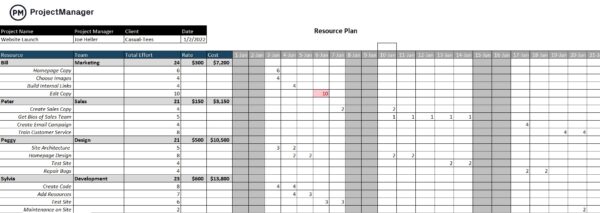
5. Estimate the Cost of Project Resources
Not only must you make a resource plan, but estimate the cost of those resources. They will be the bulk of the expenses for the project. Use historical data, expert advice and anything else you can to create the most accurate estimate for the project resources as they will be a large part of the overall project budget.
6. Conduct a Cost-Benefit Analysis
Another tool to figure out if the project is worth the time and money is running a cost-benefit analysis. This tool helps to evaluate the costs of the project against the benefits, which can be financial or otherwise. This practical, data-driven approach will help make investment decisions that are more likely to get a return.
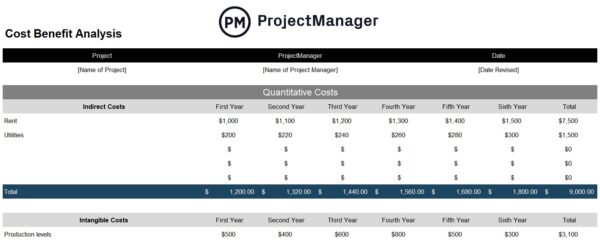
7. Estimate the Return on Investment of Your Project
Speaking of a return on investment, that’s another metric by which to measure the potential project before starting it. In other words, you’re going to evaluate the project from a solely financial perspective to see what its profitability will be.
8. Know The Break-Even Point of Your Project
The break-even point in a project is when the total cost and the total revenue are equal. This is helpful when making a financial decision about moving forward with a project especially if you’re launching a new product as it predicts how many units must be sold, which helps determine if the project meets market demand.
9. Make a Project Budget
Now you’re ready to make a budget. This should be the most accurate estimate for your project’s costs. You’ve already defined the project’s scope, now you want to use a work breakdown structure to identify all deliverables and the tasks necessary to complete them. You’ll also use the research in making the resource plan, set aside a contingency fund to cover unexpected expenses and then create the budget.
10. Secure Funding
This budget will be used to help secure funding for the project. This means coming up with a proposal that outlines your objectives, methodology and the expected outcomes for the project. It should sway potential stakeholders to fund the project because it’ll give them a return on their investment.
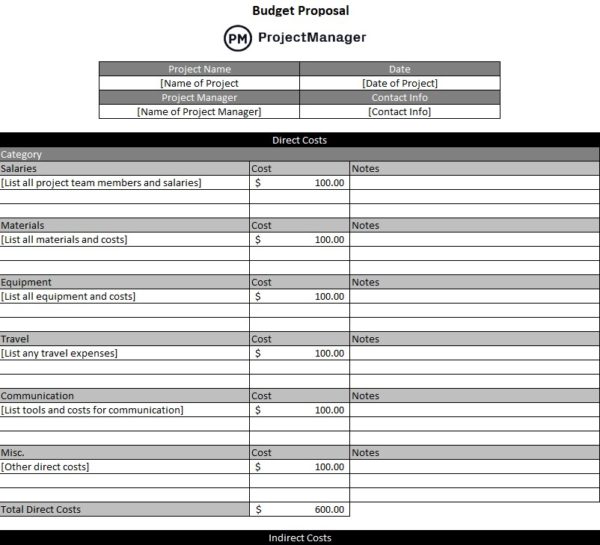
11. Track Cost Variance as the Project Is Executed
To ensure that the stakeholders who fund the project get that return on their investment, you’ll need to track cost variance. This means, comparing the actual costs of executing the project against what you planned for in the budget. This allows project managers to see if they’re spending as planned and, if not, adjust the schedule or scope to get back on track.
More Project Financial Management Templates
Project management templates can help you manage project finances. ProjectManager’s website is an online hub for all things project management, including free project management templates for Excel and Word. We have free templates to help you with every phase of a project. Here are a few that can assist your project’s financial management.
Project Timesheet Template
This free project timesheet template allows you to keep track of the work hours your team members have spent on project tasks, their pay rate and their corresponding payment.
Project Estimate Template
Having accurate estimates is part of project financial management. Use our free project estimate template for Excel to help you create and keep to your budget. Our free template allows you to attach labor and materials costs to every task in your project.
How ProjectManager Helps Manage Project Finances
While our free templates can help you get started with your project financial management process, you’re going to need project management software to be able to track those costs as you execute the project. ProjectManager is award-winning project management software that is online so the data you get is in real time, which gives you the advantage of catching discrepancies in your actual costs compared to your planned costs quickly so you can respond quickly and get back on track. But that’s only one small part of how our tool helps you manage finances.
Monitor Labor Costs With Timesheets
Labor costs are often your most expensive. If your labor resources aren’t executing their tasks according to the project schedule, you’ll be racking up extra costs in no time. Being able to keep track of your labor costs is essential to staying on budget. Our secure timesheets streamline the payroll process but also give project managers a window into the team’s work. You can see what percentage of their tasks have been completed and if that aligns with where they should be in terms of the larger project plan.

Use Reports to Get More Detailed Information
While project managers can get a high-level overview of their project’s finances with the real-time dashboard, when they want more details they can toggle over to the reporting features. There they can easily general status reports or portfolio reports if they’re managing multiple projects. They can also general reports on timesheets to track labor costs, project variance and much more. All reports are customizable, which means they can be filtered to show only the data you want to see. Then they can be shared in various formats with stakeholders to keep them updated.
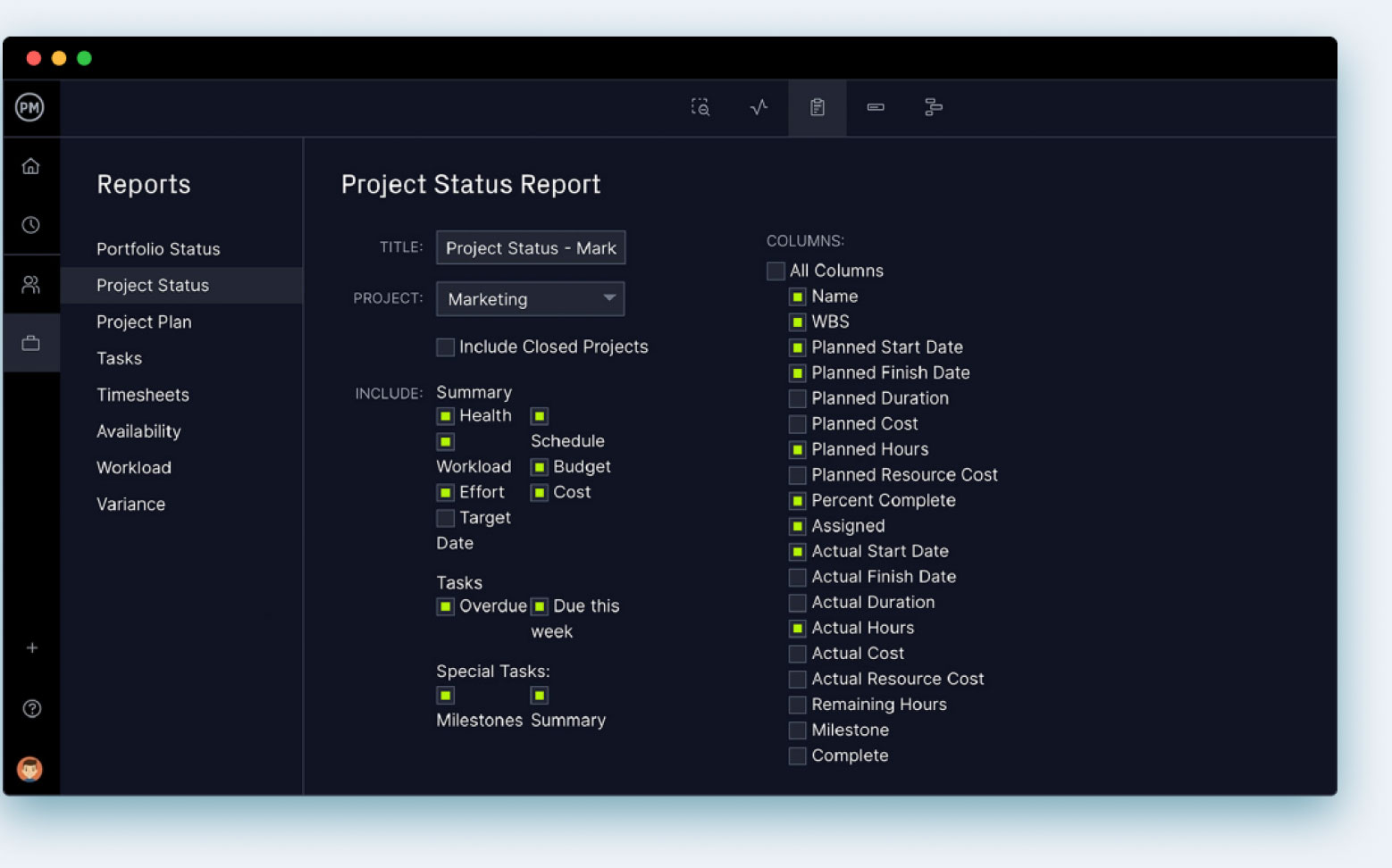
Delivering your project to a successful completion takes more than financial management. That’s why our software has risk management, task management and resource management features to ensure you have the control over your project that you need to bring it in on time and within budget.
ProjectManager is online project management software that connects teams no matter where they are, in the office, out in the field or anywhere in between. Share files, comment at the task level and more to foster better collaboration. Join teams from Avis, Nestle and Siemens who use our software to deliver successful projects. Get started with ProjectManager today for free.

